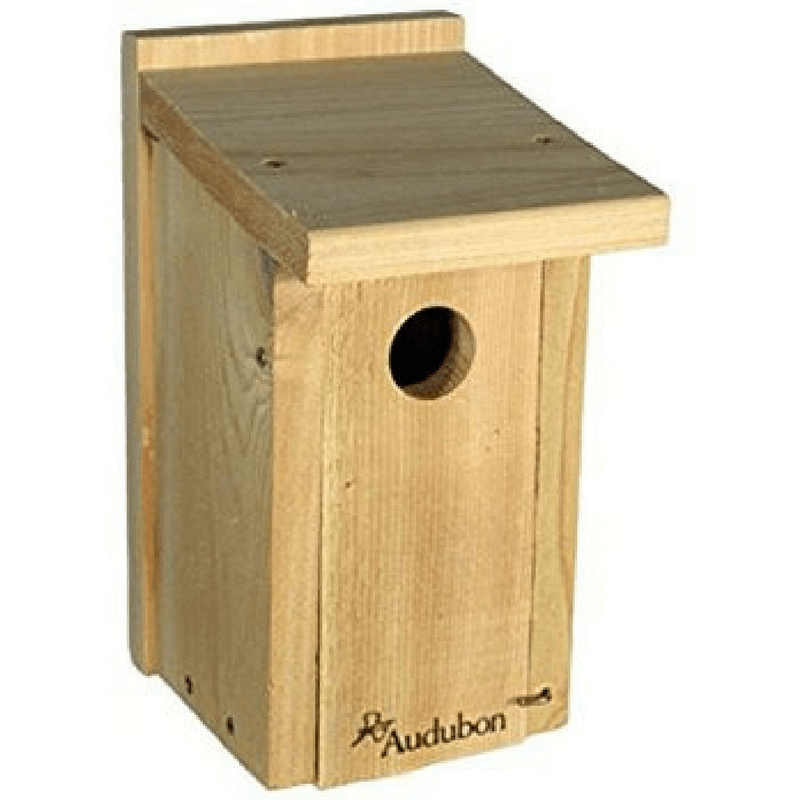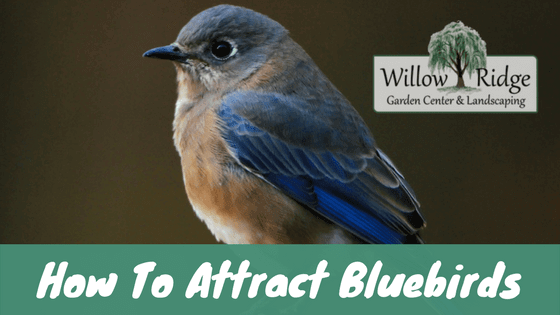How To Attract Bluebirds
Bluebird populations have declined severely over the last half century due to widespread use of insecticides, loss of tree cavities, and competition from starlings and house (English) sparrows. To help the bluebird recover, place a bluebird house (also called a nest box) at your home, church, school, or business. The houses are specifically designed to attract bluebirds to nest in them and discourage house sparrows and starlings. Besides being a beautiful addition to your garden, a pair of bluebirds will eat copious amounts of insects, providing a valuable and natural means of insect control.
Bluebird House Placement
Place bluebird houses around open fields, pastures, churches, golf courses, cemeteries, garden and large lawns. These areas usually provide plenty of insects to eat. Avoid areas where insecticides are used heavily because the bluebirds will have trouble finding insects there, and the insects they do find may be covered with insecticides that may also poison the bluebirds. Place the houses 4 to 6 feet above the ground and 50 to 100 yards apart. A metal pole or post is best. Do not crowd the houses- bluebirds can be quite territorial. Try to select spots where trees, utility wires, tomato stakes, or fences are within 25 to 100 feet of the boxes Bluebirds use these for perches when feeding. These perches also help young birds during their first flights.
If the houses are located near woods or brush piles, chickadees, tufted titmice, nuthatches, and wrens may use them. These birds like the bluebird are welcome garden allies and should not be discouraged from using the houses. It may be possible to get a bluebird to nest in the same area by placing another box 10 to 20 feet from the one the other bird is using.

Encouraging Multiple Broods
Normally bluebird produce 2 to 3 broods per year. The female lays one egg per day for 4 to 6 days. She then incubates the light blue eggs for about 12 days. The birds remain in the nest for about 15 days after hatching. The male is in charge of the young bluebirds when they leave the nest. He feeds them and teaches them how to find food. He continues this training for several days after they leave the nest. While the male is busy with the fledglings, the females busy remodeling the old nest or building a new one for a second brood. To encourage a second brood, remove the old nest after the fledglings have left. All good bluebird houses have a side wall that will swing open to allow easy cleaning. This side is usually held in place with a removable nail latch.
Bluebird Diet
Although the bluebird’s diet consists mainly of insects, they do eat berries and fruit, especially in the winter when insects are scarce. You can attract bluebirds by planting some of the following trees and shrubs:
- wax myrtle
- blackberry
- blueberry
- elderberry
- mulberry
- serviceberry
- viburnum
- red cedar
- dogwood
- holly
- lespedeza
- pines
- sumac
Other songbirds will also benefit from these plantings.

